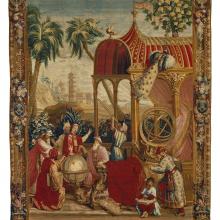Games and play have been woven into the cultural fabric of South Asia for millennia as evident from numerous material, textual, and visual sources. Yet it is only in the 19th century that the study of games emerges as a specialized field of knowledge within the domain of the astral sciences. This project engages with three encyclopedic game texts from the period written in Sanskrit with extensive commentaries in Hindi, Marathi, and Kannada. It explores how living traditions of play are codified as knowledge and brought into conversation with the universe itself.
The first text is the Cetovinodanakavya, or the poem on the diversions of the mind, written by the astrologer Daji Jyotirvid from Kolhapur in 1821. It describes the joys and hardships of pilgrimage and includes a detailed section on games to be enjoyed while traveling between holy sites. It offers a rare glimpse into the ludic lives of common people and serves as an important corrective to the stereotypes of the incessant gambler and the sporting lovers usually encountered in the literature.
The second text is the Kautukanidhi, or the treasure of pastimes, written by Krishnaraja Wodeyar III around 1850. Krishnaraja ruled the Princely State of Mysore from 1799 until his death in 1868 and was an avid inventor of games and puzzles. The text is unique in laying bare the creative mind of its author and the ways in which he transforms simple folk games into elaborate models of religious and scientific knowledge systems.
The third and final text is the Kridakaushalya, or skilfulness in games, written by the astrologer Harikrishna Sharma from Aurangabad in 1872. Harikrishna sees games as straddling the divide between play and prognostication and prefaces his description of individual games with a discussion of the mystical properties of game board diagrams as tools of divination. His text elevates the study of games to the status of a shastra, or a specialized field of knowledge, and demonstrates how ludic knowledge was received and engaged with by the scholarly community.
Together, the three texts document the early modern reception of a wide variety of traditional South Asian games that reach back far beyond the texts themselves. Several of the games have a long history of association with the astral sciences as cosmological models or tools of divination, and will be used to trace the transmission, translocation, and transcreation of astral knowledge systems across trans-regional Asia.

[Manuscript:] The dice game of the Nine Celestial Bodies (navagrahākṣakrīḍā). Manuscript illustration of an astrological dice game designed by Maharaja Krishnaraja Wodeyar III, ruler of the Princely State of Mysore in India from 1799 to 1868. Exemplifies the use of board games as interactive representations of traditional knowledge systems in South Asia. Private collection, US. Previously in the India Office Library at the British Library (acc. no. BL IOL Neg 4589). Source: CHRISTIE'S IMAGES LTD. 2024.




